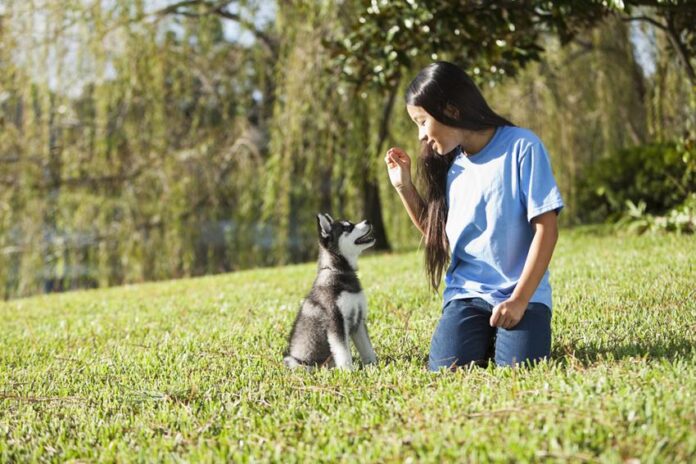Training your dog is one of the characteristics of a good owner. You don’t have to do it yourself; there is plenty of certified dog training to help you with this. For example, if you visit a site like ridgesidek9ohio.com, you’ll see that they have programs in place to turn your furry friend into a nice canine citizen.
The last thing you want is your dog jumping up onto visitors every time they come around to your house. Being very playful and rambunctious is just one of many negative traits that your dog could have. With the right training, your dog can be rid of such unwanted habits. Of course, there are many training programs designed to get your dog to abandon certain traits. However, there are basic ones that every dog owner must ensure that their dog is familiar with. These include:
1)Sit
Starting with the very basic commands for any dog trainer tends to achieve better results. Among the essential dog commands is the “sit” command. Being relaxed and calm is something most dog owners struggle to instill in their dogs. This command helps accomplish that, providing a useful springboard upon which other commands can be built.
2) Down
“Down” or simply lying down should be the next logical command to teach a dog after “sitting.” It helps to ensure your dog continues the relaxed state achieved by learning the first command. Much like parking a car, it is useful for many situations where you need the dog to be calm as you go about your activities. For example, if you’re busy around the house, you can command your dog to lie down to ensure it doesn’t mess up the place.
3) No
This command is a good way to deter your dog from doing something you don’t want them to do. The “no” command is a useful tool to rebuke your dog and ensure that they immediately refrain from a certain course of action. “Leave it” is also an almost identical command to the “no” one. For instance, if you’re out for an evening stroll and your dog suddenly pounces on another dog’s toy, the “leave it” command can quickly make the dog desist from such actions.
4) Come
This is very useful for your dog to learn. The “come” command ensures that you can command your dog to leave whatever it’s doing and come to you. This is crucial if you want to get to a point where you take strolls with your dog without using a leash. Naturally, your dog may be curious about certain things in public and may want to investigate. This command ensures that they come running to you quickly.
5) Heel
“Heel” is another useful command for owners that love to take their dogs outdoors frequently. In addition, the “come” command is very useful in ensuring that your dog is always close by your side. It ensures that your dog can walk calmly by your side without a lot of playful movements. While any dog can learn it, the “heel” command is best taught when your dog is still a puppy. This ensures that they learn the significance of staying close to your side. It also helps you to avoid constantly yelling the “no” command. The “heel” command also lays the foundation for other movement commands later on. For example, the “pivot” command is easier for dogs that have already mastered the “heel” one.
6) Off
The ” off ” command comes in handy when you have a very playful dog that loves to tear the place up; the “off” command comes in handy. For example, your dog may love sleeping in your bed or on the dining table. The “off” command is useful in making them desist from such behavior, telling them that it’s not okay to do such things.
7) Stay
There are situations around the house that may make your dog more troublesome. The “stay” command becomes useful in such situations. There are two variations of it; the sit-stay and the down-stay. Many owners prefer the down-stay becomes it plays into the other commands easily.
These are the basic commands that every dog must be taught. While doing this, it’s important to remember that dogs tend to have short attention spans. As such, pacing them is always advised during learning these commands. This, coupled with patience, will go a long way toward achieving better dog training results. Ensure that the commands are clear. For example, giving the “sit” command multiple times in quick succession may not be a good training strategy.











